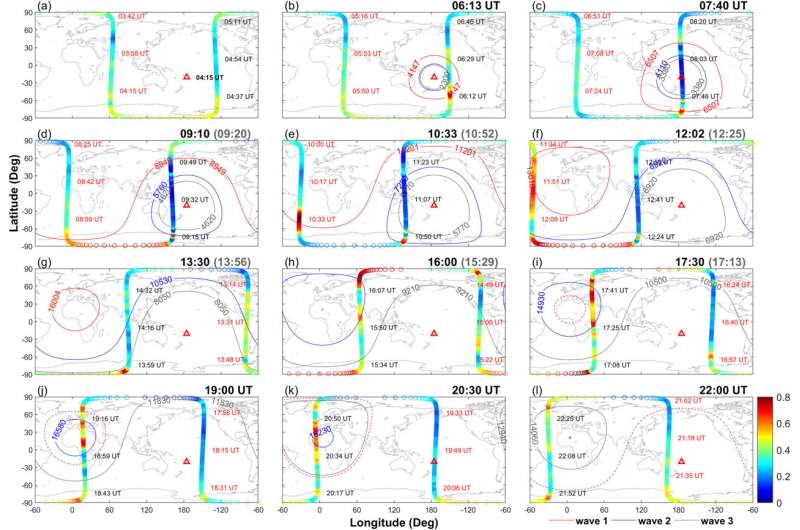This article has been reviewed according to Science X's editorial process and policies. Editors have highlighted the following attributes while ensuring the content's credibility:
fact-checked
peer-reviewed publication
trusted source
proofread
Researchers reveal disturbances of Tonga volcanic eruption

Recently, a team led by Prof. Lei Jiuhou from University of Science and Technology of China (USTC) of the Chinese Academy of Sciences and the collaborators revealed the notable evidence of the dramatic thermospheric disturbances and global upper thermospheric perturbations of the Tonga eruption (January 15, 2022), and confirmed that the impact of volcanic eruption has outreached the ionosphere and creeps into the thermospheric density up to 500 km satellite orbiting altitudes. This study was published in Geophysical Research Letters.
The Tonga volcanic eruption significantly redistributed the global neutral density 500 km above the ground, with higher density in the antipode hemisphere and lower density in the volcanic eruption hemisphere.
Researchers discovered that this eruption stimulated thermosphere atmospheric fluctuations with multiple wave modes in the speed range of 200–450 m/s. Thermosphere atmospheric fluctuations propagate globally in concentric circles centered on the Tonga volcano, and some wave models can propagate and converge to the antipode of the volcano, and further diverge from the antipode to continue propagation.
Researchers believed that in accordance with the characteristics of propagation, thermosphere atmospheric fluctuations may be related to the upward transmission of energy from gravitational waves, Lamb waves and tsunami waves in the lower atmosphere.
This study initiates to provide the direct effect of the volcanic eruption on thermospheric density, which may expand the understanding of the interactions between the Earth's spheres from the lithosphere upward to the thermosphere.
More information: Ruoxi Li et al, Large‐Scale Disturbances in the Upper Thermosphere Induced by the 2022 Tonga Volcanic Eruption, Geophysical Research Letters (2023). DOI: 10.1029/2022GL102265
Journal information: Geophysical Research Letters
Provided by Chinese Academy of Sciences





















